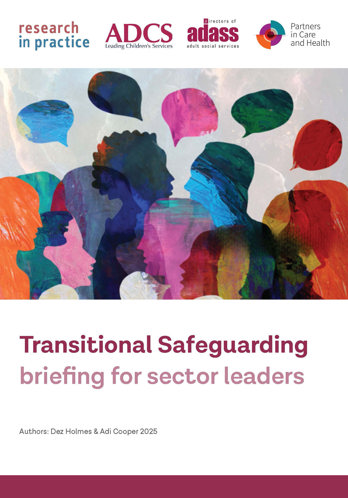Transitional Safeguarding briefing for sector leaders: Strategic Briefing (2025)
Introduction
The current binary approach to safeguarding has not always served young people well. The needs of young people rarely cease upon turning 18. Many harms facing young people can in fact escalate at this point – not least because professional involvement or service support reduces or stops altogether. Research also highlights that cognitive, social and neurobiological development continues well into our mid-twenties (Sawyer et al, 2018).
As a result of the disconnect between the safeguarding systems for children and adults, many young people face a ‘cliff edge’ and are left without support during this critical life-stage. This is not only damaging for young people and those who care about them, but is also an inefficient use of public money.
This briefing is for anyone interested in, or responsible for safeguarding young people across the interlocking systems for children and adults. It has been drafted collaboratively by Research in Practice with support from ADCS, ADASS, Partners in Care and Health and Professor Christine Cocker.
Supporting Transitional Safeguarding in local areas
Transitional Safeguarding is a relatively new concept. It is a different way of thinking about safeguarding young people as they make the transition from adolescence into adulthood.
The concept of Transitional Safeguarding has been developed by Research in Practice, informed by learning from those who have pioneered approaches such as Contextual Safeguarding and Making Safeguarding Personal. It reflects growing evidence that too many young people enter adulthood facing risk and harm without effective support.
Wherever you are on your local journey and whatever kind of help you need – know that at Research in Practice, we are here to support you.
Professional Standards
PQS:KSS - Shaping and influencing the practice system | Designing a system to support effective practice | Safeguarding







